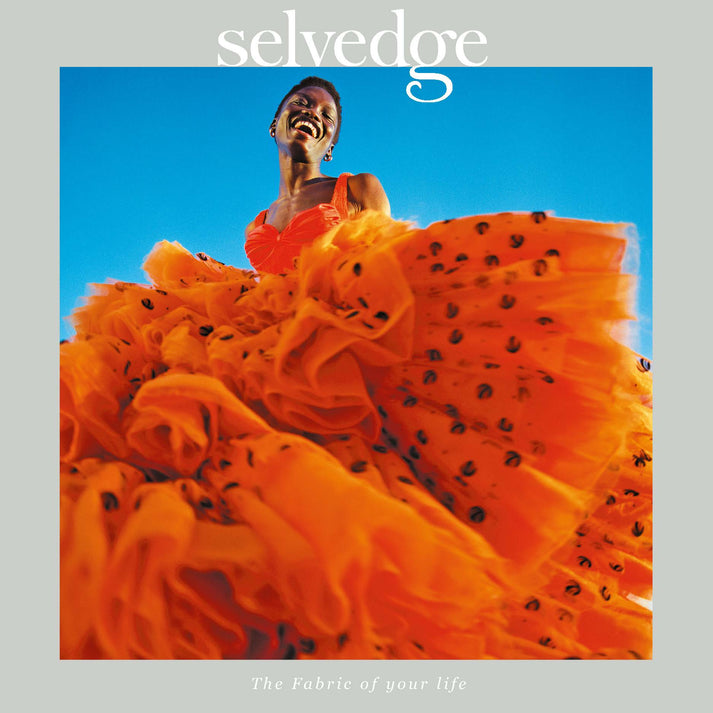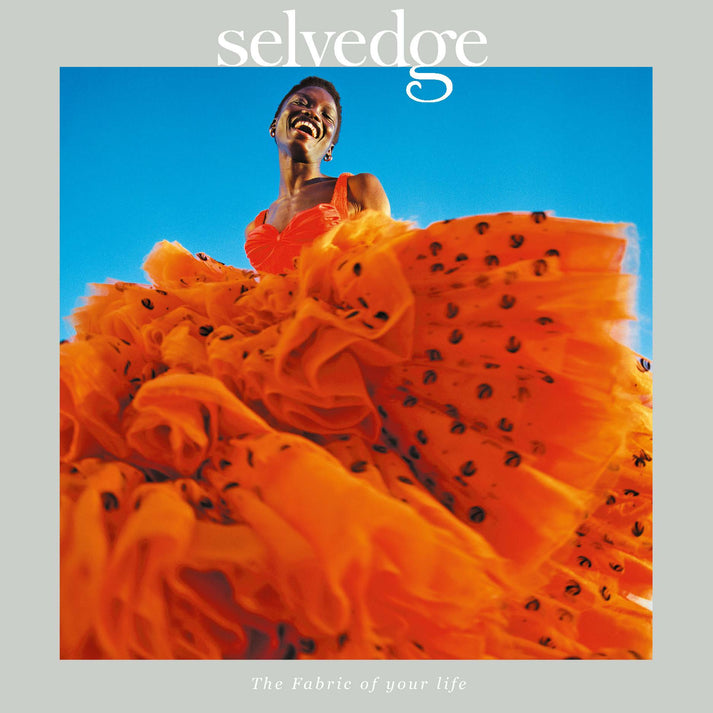Selvedge Magazine
Selvedge Magazine - Issue 107 High Summer
Selvedge Magazine - Issue 107 High Summer
Couldn't load pickup availability
HIGH SUMMER: Keeping Cool in Linen and Lace
Linen is one of the oldest and most environmentally sustainable fibres. It has undoubted ethical and aesthetic appeal. Derived from the flax plant, the second-most productive fibre crop, it is surpassed only by hemp. Linen flourishes organically, and in contrast to cotton, needs only rainwater to thrive, which fortunately is in abundance in the swath of land that stretches along the coast from Brittany in France through Flanders to Friesland in the Netherlands, where the crop is cultivated today. The processing of linen is also simple and can be undertaken domestically, as is demonstrated by several projects, described in Dr John Ennis’ article ‘The Good Seed on the Land’, that have successfully reintroduced linen cultivation across Europe. We are watching the weather with anticipation for just the right moment for the harvest to begin at the Linen Project in the Netherlands which will be live-streamed as a Slow TV experience. See the website for updates.
Linen has strong hollow fibres with almost no elasticity. Its ability to absorb 20% of its weight in moisture makes it an ideal summer fabric, but when this moisture evaporates, the fibres are prone to crease. This is a quality that has been exploited through the centuries by lacemakers in Flanders and the coiffes of Brittany, as well as contemporary artists like Mercedes Vincente, who relies on linen’s ability to hold a fold in her shell-inspired sculpture.
Linen lost favour in the late 20th century partly due to the perception that it was a high-maintenance fibre; yet, once formality was abandoned in favour of a more casual look, linen took off again. In this issue, we explore the work of makers who employ the relaxed quality of linen to great effect: recently deceased Alison Morton, who wove extraordinary-ordinary textiles, and Jackie Parsons is inspired by the Dutch masters’ uber-comfortable, informal domestic bliss.
The lustre and softness of linen make it an obvious choice for printers, seen in the contemporary stencilled work of Pauline Greuell in the Netherlands, as well as, in a tiny town near Italy’s northeastern coast, where the unique art of handmade, rust-printed textiles is still alive thanks to a piece of living history: a massive stone-and-wood mangle designed, in part, by Leonardo da Vinci.
As the mercury rises, our attention turns to the sun and we look at ‘The New Sun’, a body of work by Caroline McQuarrie, that explores what life might have been like for the women living with or alongside the miners in early-colonial Aotearoa New Zealand.
Finally, representations of ‘Solar Worship & Symbolism’ amongst Indian and Mexican communities by Sophie Vent show us the importance of the warmth of the sun in all our lives. If you are doing a little sun- worshipping yourself, pop a copy of Selvedge in your beach bag! Happy reading!
Materials
Materials
Dimensions
Dimensions
Care information
Care information


